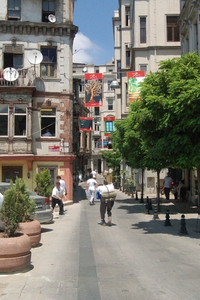Introduction

This course, Ethnic Conflict in Foreign Countries, examines political and
violent conflict among ethnic and national groups and the challenges
these conflicts pose for democratic and democratizing states. Such groups
include the Ulster Catholics, the Sri Lankan Tamils, and the Spanish Vascos.
What do all three of these have in common? All three are defined as ethnic
groups; none of the three hold the reins of power in their respective states;
and all three have resorted to terrorism in their respective democratic
states.
This course will provide you with the tools to further examine the causes of
ethnic conflict throughout the world. By the end of this course, you will have
a deep understanding of several theories of ethnic violence, you will know
the events leading up to the outbreak of ethnic violence in several cases,
and you will gain an in-depth knowledge of one ethnic conflict in the world.
Required Textbook
The required textbook for this course is:
-
Taras, Raymond C., and Rajat Ganguly. 2006. Understanding
Ethnic Conflict: The International Dimension, 3rd edn. New York: Pearson-Longman.
(ISBN: 0-321-36480-5)
The textbook is divided into two parts. The first part lays out the theories of
ethnic conflict. The second part applies these theories to several case studies.
The course is likewise divided into two parts. The first part discusses the
theories and case studies in the book. The second part has you investigate
and report on a case study of your own, different from one in the text.
This investigation will lead to two products. The first product will be a presentation
of your findings for the class. This presentation should cover the history of the conflict,
the positions held by each of the sides (both ideological and territorial), prognosis
for an end to the conflict, and your own assessment of appropriate steps to take to
resolve the issue.
The second product will be a paper that will be shared with the entire class. While the
presentation will necessarily cover only the important points and will briefly provide
the history of the conflict, the paper will give a more in-depth history and analysis. As
such, it will be very important for the rest of the class to read your product.